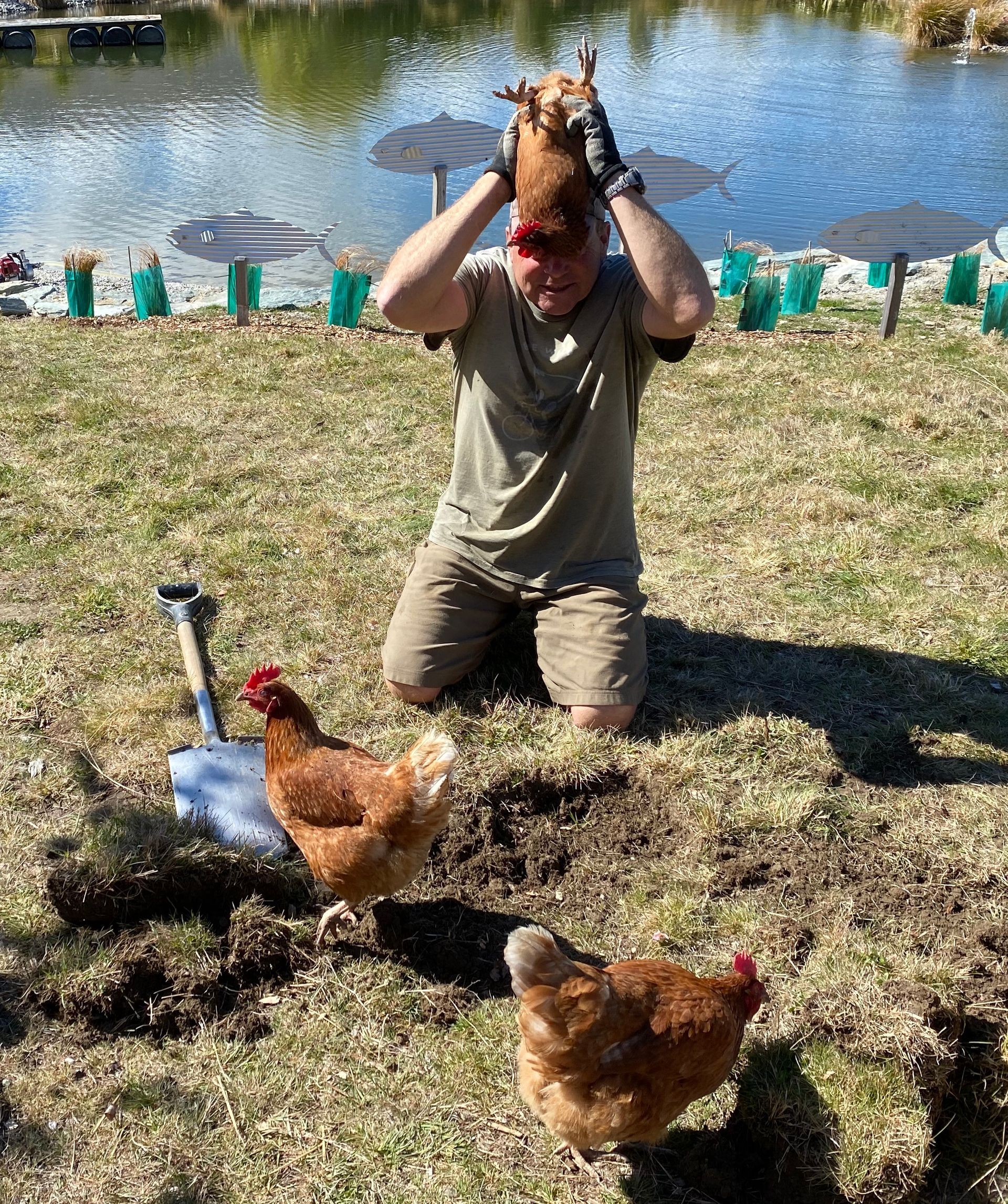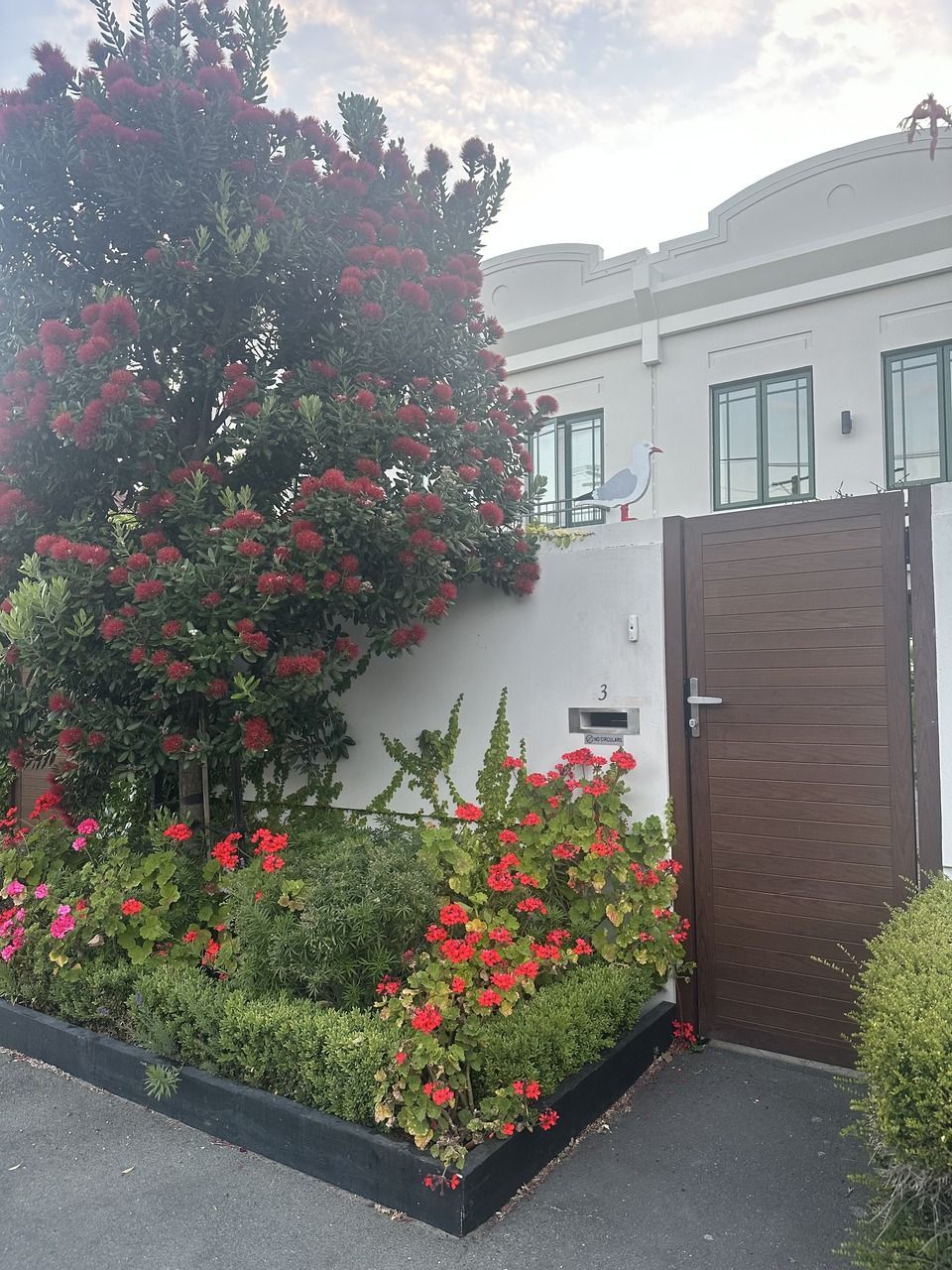Eggspensive

Fun you can have with chickens
The great egg crisis has hit New Zealand. Changes in the regulations around chicken farming, together with upcoming supermarket restrictions, have created a crunch point in the egg supply. Farmers have been required to change from battery cages (where hens have no space to move) to colony cages – homes with an ‘enrichment area’ (whatever that means in practice!) for 60 chickens.
We chose to get our eggs from our own chickens shortly after arriving at pa harakeke and, now, I would choose to have chickens even if I lived in an urban setting. When we got chickens, I did not have saving money in mind. My focus was on:
- Producing our own food conveniently, as we are 30km from a supermarket.
- Petting eggs from chickens who have a good life.
- Getting good eggs – the colour and taste of home grown chicken eggs is substantially superior to most supermarket eggs.
Setting up with chickens wasn’t cheap. A coop for four to eight chickens can set you back somewhere between $400 and $1500 (I made a second coop for around $200 of materials). We have fitted the coops with auto-opening/closing doors (responding to sunlight), auto-waterers and auto-feeders (so we can go away for a few days) for another $400. However, once you have the set-up it will last multiple generations of chickens.
The chickens themselves have cost us $30-50 each. We have been through one generation so far. We started with four brown shavers, nice reliable layers who are very friendly. Then I made the mistake of buying four of a heritage breed (Ancona-Orpington cross), on a slightly flawed animal welfare basis that heritage chickens live longer than brown shavers (five-eight years cf three-four) while producing a similar amount of eggs across their lifetimes. Then we bought another four brown shavers (when the first lot died) because we like them better.
Chickens with auto-everything are relatively little work, although having the two breeds has meant two chicken houses because they didn’t get on with each other. How much work depends partly on how good your chickens are at laying their eggs in their nesting box. Our brown shavers have decided they don’t want to and chickens turn out to be impossible to train – we couldn’t even train the heritage chickens to sleep in their very nice house, they prefer the kowhai tree. However, chickens do like interaction – the brown shavers want to be petted and the Ancona-Orpingtons want to be fed green produce. You will rarely see any living being so excited about silver beet, as a chicken.
When I started writing this article I was going to say that chickens make for expensive eggs, however my writing has educated me. Here are my cost calculations:
- Chicken food costs about 25c per day per chicken.
- Brown shavers produce eggs three days out of four, on average.
- Ancona-Orpingtons produce eggs two days out of four, on average (as well as producing fewer eggs on a regular basis they have about two months off early winter, which is a bit frustrating on the egg supply front).
- On a chicken-food-only basis, this means that brown shaver eggs are around $4 per dozen and Ancona-Orpington eggs $6 per dozen.
- If I add the cost of the chickens and 1/3 of the cost of the set-up (amortised over the chicken lifetimes), I get around an additional $0.75 per dozen eggs.
- If I buy supermarket eggs at present I pay around $6 per dozen for colony hens and $10 per dozen for free-range hens (though I don’t know how free those ranging chickens are).
So, I get nicer eggs, feel better about the chickens, get to listen to their lovely little cooing noises at night and talk to their enthusiastic chicken faces when I pass the coop, and pay only slightly more than the cost of eggs from the worst treated chickens now allowed. This doesn’t seem so bad. Moreover, supermarkets will only sell barn-kept or free-range chickens from 2025, at which point I reckon our eggs will be cheaper than most supermarket eggs. Everyone should keep chickens!
SAFE (Save Animals From Exploitation) still wouldn’t agree with me. They argue that we should allow chickens to live their natural lives, which would mean free-ranging chickens that have a ‘natural’ two clutches of eggs a year, laying twelve to twenty-four eggs total. To this I have no answer, other than I am not currently likely to become vegan so will most likely stick with keeping chickens. Do chickens suffer when they lay eggs every day, or every other day? I don’t know. Nor do I know whether chickens would rather exist in their flax and kowhai gardens at our house laying regular eggs, or not exist at all, because I wouldn’t be keeping chickens for twelve eggs twice a year. I’ll let you know when the chickens enlighten me on this matter.






